Honduras
Welcome to Honduras
Welcome to Honduras, Central America’s hidden gem-a country where turquoise Caribbean waters meet lush rainforests, ancient Mayan ruins, and vibrant local traditions. Often overlooked by mainstream tourism, Honduras offers a tapestry of experiences for every traveler, whether you’re seeking adventure, relaxation, or a journey through history and culture. The warmth of its people, the richness of its landscapes, and the authenticity of its daily life make Honduras a destination waiting to be discovered.
Honduras is the second-largest country in Central America, bordered by Guatemala, El Salvador, and Nicaragua, with coastlines on both the Caribbean Sea and the Pacific Ocean. Its capital, Tegucigalpa, sits in the south, but most travelers are drawn north to the mountainous jungles, archaeological treasures, and the idyllic Bay Islands. From cloud forests teeming with wildlife to palm-fringed beaches and bustling markets, Honduras is a land of contrasts-where ancient civilizations meet modern rhythms and nature’s wonders are never far from reach.
Why Visit Honduras?
1.
Untouched Natural Beauty: Honduras boasts some of the most pristine and diverse natural landscapes in Central America. Picture yourself exploring misty cloud forests, wandering through lush national parks, or relaxing on secluded Caribbean beaches. The Bay Islands-Roatán, Utila, and Guanaja-are a diver’s paradise, offering vibrant coral reefs, crystal-clear waters, and abundant marine life. Inland, the Pico Bonito National Park and Lake Yojoa provide opportunities for hiking, birdwatching, and encounters with rare wildlife.
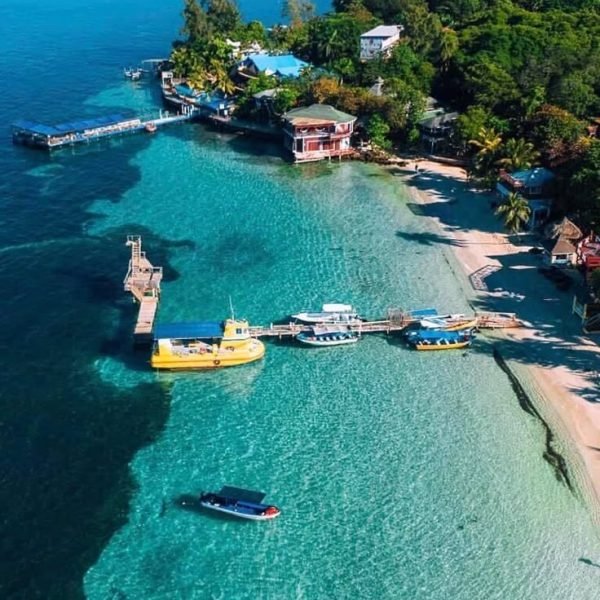
2.
Rich Culture and History: Beyond its natural allure, Honduras is steeped in history and tradition. The Copán Ruins, a UNESCO World Heritage Site, are among the most impressive remnants of the ancient Mayan civilization, featuring intricate stelae, hieroglyphic stairways, and a sense of mystery that transports visitors back in time. In charming colonial towns and Garifuna villages along the coast, you’ll find colorful festivals, traditional music, and a way of life that feels both timeless and welcoming.

Planning Your Trip
Visa Information
Most travelers will need to prepare a few documents before entering Honduras. The standard requirements include:
- A completed visa application form (available online)
- A valid passport with at least six months’ validity from your date of entry
- Proof of financial solvency (such as a recent bank statement)
- Proof of employment or, if not employed, your spouse’s employment verification
- A notarized invitation letter (if invited by a resident)
- Two recent passport-sized photographs with a white background
- Contact details (phone number and email address)
- If you hold foreign residency, a copy of your residency card
Additional documentation may be required on a case-by-case basis, so it’s wise to check with your nearest Honduran consular office before you travel.
Best Time to Visit
Honduras enjoys a tropical climate, with regional variations that can influence your travel plans:
- Dry Season (November to April): This is generally the best time to visit, especially for beach lovers and divers heading to the Bay Islands. The weather is warm and sunny, with less rainfall and calmer seas-ideal for exploring ruins, hiking, and outdoor adventures.
- Rainy Season (May to October): While the mainland and mountain regions can be wet, the Bay Islands often experience less rain and remain a popular destination year-round. The lush landscapes during this period are perfect for nature enthusiasts, but some rural roads may become challenging.
If you’re interested in local culture, consider timing your visit with one of Honduras’s lively festivals or holidays, when towns come alive with music, dance, and traditional cuisine.
Getting To and Around
Getting To Honduras
- By Air: The main international gateways are Ramón Villeda Morales International Airport (San Pedro Sula), Toncontín International Airport (Tegucigalpa), and Juan Manuel Gálvez International Airport (Roatán, for the Bay Islands). Direct flights connect Honduras to major cities in the Americas.
- By Land: If you’re traveling from neighboring countries, bus services connect Honduras with Guatemala, El Salvador, and Nicaragua. Border crossings are straightforward, but always check the latest entry requirements and safety advice.
Getting Around
- Buses: The most budget-friendly way to travel between cities and regions. Direct buses are faster and more comfortable, while local “parando” buses make frequent stops and are cheaper but slower. For example, a direct bus from Tegucigalpa to La Ceiba takes about six hours, while Tegucigalpa to Copán Ruinas is roughly nine hours.
- Taxis: Widely available in cities and towns. Always agree on the fare before your journey, and consider using shared “colectivo” taxis for popular routes to save money.
- Water Taxis: On the Bay Islands, water taxis are essential for hopping between beaches and villages, with regular routes on Roatán and between the mainland and islands.
- Domestic Flights: Fast but expensive, with regular connections between major cities and the Bay Islands. If you’re on a tight budget, buses and ferries are better alternatives.
- Car Rental: Not recommended due to challenging road conditions, heavy traffic, and safety concerns. Stick to public transport or organized tours for peace of mind.
- Hitchhiking: Possible for experienced travelers, but always exercise caution and avoid impromptu taxis expecting payment.
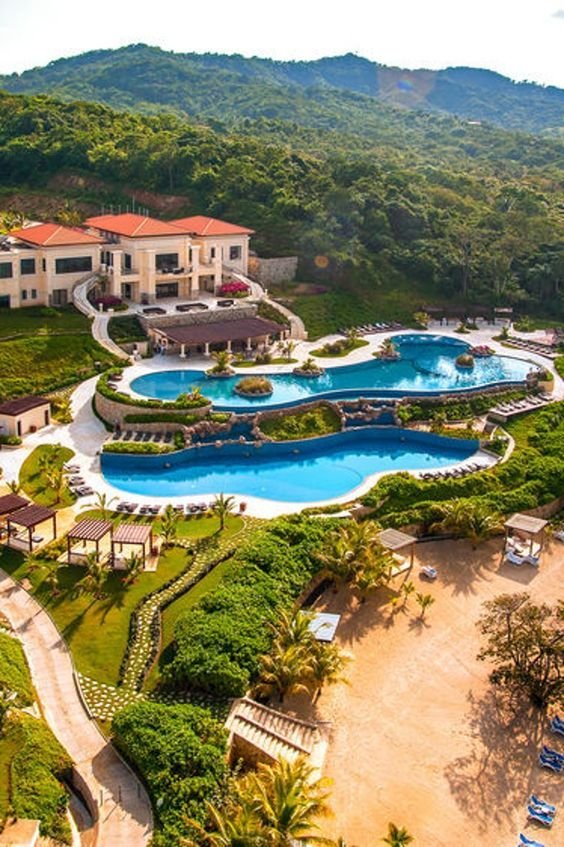
Accommodation
Honduras offers a wide range of accommodation options to suit every traveler’s preferences and budget, from luxury beachfront resorts to cozy hostels and charming boutique hotels. Whether you’re visiting the vibrant Bay Islands, exploring ancient Mayan ruins in Copán, or staying in the bustling cities like Tegucigalpa and San Pedro Sula, you’ll find comfortable and welcoming places to rest.
Luxury Resorts and Boutique Hotels
The Bay Islands, especially Roatán, are renowned for their upscale resorts that combine stunning ocean views with excellent amenities. Places like Puerta Azul and Fantasy Island Beach Resort offer beachfront casitas, all-inclusive packages, and easy access to snorkeling and diving activities. Luna Beach Luxury Boutique Beach Front Resort is another top choice, known for its intimate atmosphere, high-end rooms, and oceanfront location with jungle views. These resorts often feature on-site restaurants, dive shops, pools, and spa services, making them perfect for travelers seeking relaxation and adventure in one spot.
Mid-Range Hotels/ Budget-Friendly Hostels and Guesthouses
In cities and popular tourist areas, mid-range hotels provide comfortable rooms with modern conveniences such as air conditioning, Wi-Fi, and breakfast included. Hotels like Hotel Carnaval in La Ceiba and Hotel Ciudad Blanca in Copán Ruinas offer amenities such as swimming pools, fitness centers, and restaurants. These hotels strike a balance between comfort and affordability, ideal for families or travelers who want convenience without breaking the bank.
For backpackers and budget travelers, Honduras has numerous hostels and guesthouses that offer clean, simple accommodations at very affordable rates. Palmira Hostel in Tegucigalpa is a popular option, providing private rooms with ensuite bathrooms and communal spaces for socializing. In Copán Ruinas, guesthouses like Hotel & Hostal Berakah offer basic but comfortable lodging with shared kitchens and free Wi-Fi. These options are great for meeting fellow travelers and experiencing local life more intimately.
Unique Stays
For a more authentic experience, consider staying in eco-lodges or small inns located near nature reserves or rural villages. These accommodations often emphasize sustainability and local culture, providing opportunities to engage with the environment and community.
Tips for Booking
It’s advisable to book accommodations in advance, especially during the dry season (November to April) when tourism peaks. Many hotels offer flexible cancellation policies and all-inclusive packages. When choosing a place to stay, consider proximity to attractions and transportation options, especially if you plan to explore multiple regions.
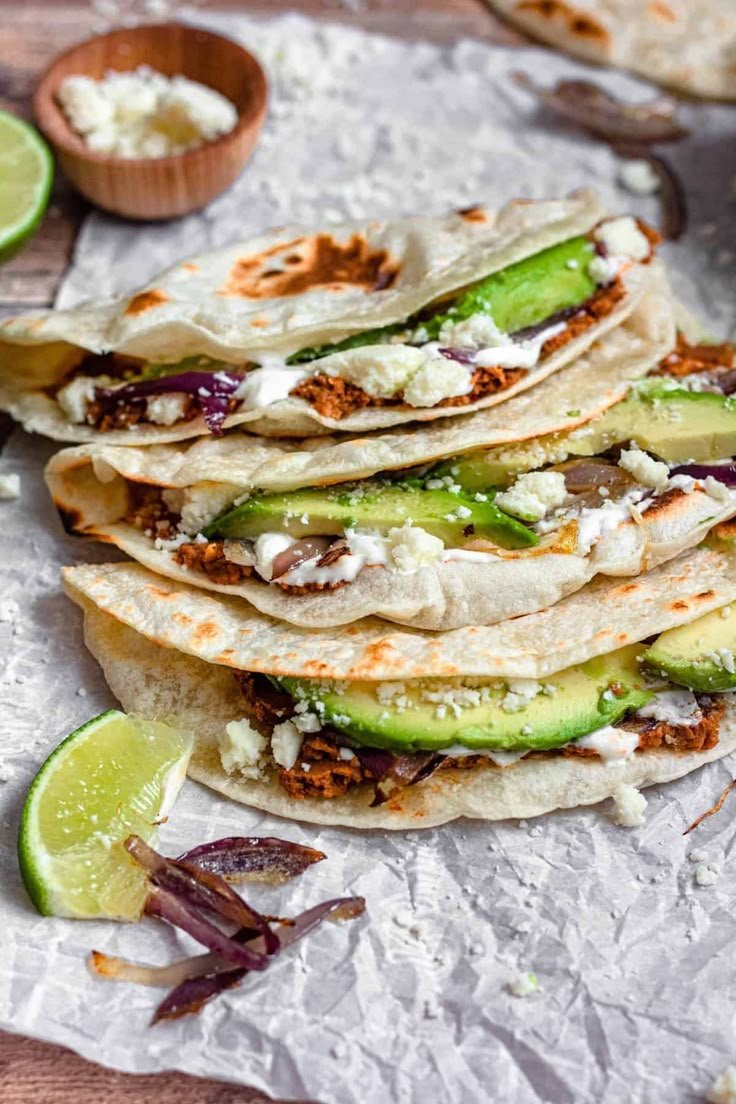
Food and Drink
Honduran cuisine is a flavorful reflection of its diverse cultural heritage, blending indigenous, Spanish, African, and Caribbean influences. Food in Honduras is hearty, fresh, and often centered around staples like corn, beans, rice, and tropical fruits. Whether dining in a local market, a street stall, or a high-end restaurant, you’ll find dishes that are both comforting and exciting.
- Traditional Dishes:
- Baleadas are one of Honduras’s most beloved street foods-flour tortillas filled with refried beans, cheese, cream, and sometimes eggs or meat. They make a perfect quick snack or light meal.
- Sopa de Caracol (conch soup) is a flavorful Caribbean specialty made with conch, coconut milk, yuca, and spices, offering a taste of the coastal Garifuna culture.
- Plato Típico is a traditional platter featuring grilled meat (usually beef or chicken), rice, beans, fried plantains, and fresh salad, showcasing the country’s staple ingredients.
- Tamales and Enchiladas are also common, often enjoyed during festivals and family gatherings.
- Seafood: Given Honduras’s extensive coastlines, fresh seafood is abundant and delicious. You can enjoy grilled fish, shrimp ceviche, lobster, and other shellfish, particularly in coastal towns and the Bay Islands. Many resorts and seaside restaurants serve freshly caught seafood prepared with local herbs and spices.
- Fruits and Snacks: Tropical fruits like mango, papaya, pineapple, and guava are widely available and often served fresh or in juices. Street vendors also sell fried plantains, yucca chips, and empanadas filled with meat or cheese.
- Beverages:
- Horchata is a popular sweet rice drink flavored with cinnamon and sometimes nuts.
- Salvavidas is a refreshing fruit nectar commonly found in markets.
- Coffee lovers will appreciate Honduras’s rich coffee culture, with many local cafés serving high-quality brews made from beans grown in the country’s mountainous regions.
- For alcoholic beverages, Presidente is the most popular local beer, and you can also find rum and tropical cocktails, especially in tourist areas.
- Dining Experience:
- In cities like Tegucigalpa and San Pedro Sula, you’ll find a growing number of international restaurants alongside traditional eateries, offering everything from gourmet dining to casual cafés.
- On the Bay Islands, seafood restaurants with ocean views create a memorable dining atmosphere.
- Local markets and street food stalls provide the most authentic and budget-friendly culinary experiences, where you can savor freshly prepared dishes and mingle with locals.
- Food Safety Tips: While Honduran cuisine is delicious, it’s wise to take standard precautions with street food and tap water. Opt for freshly cooked meals, peel fruits yourself, and drink bottled or filtered water to avoid stomach issues.
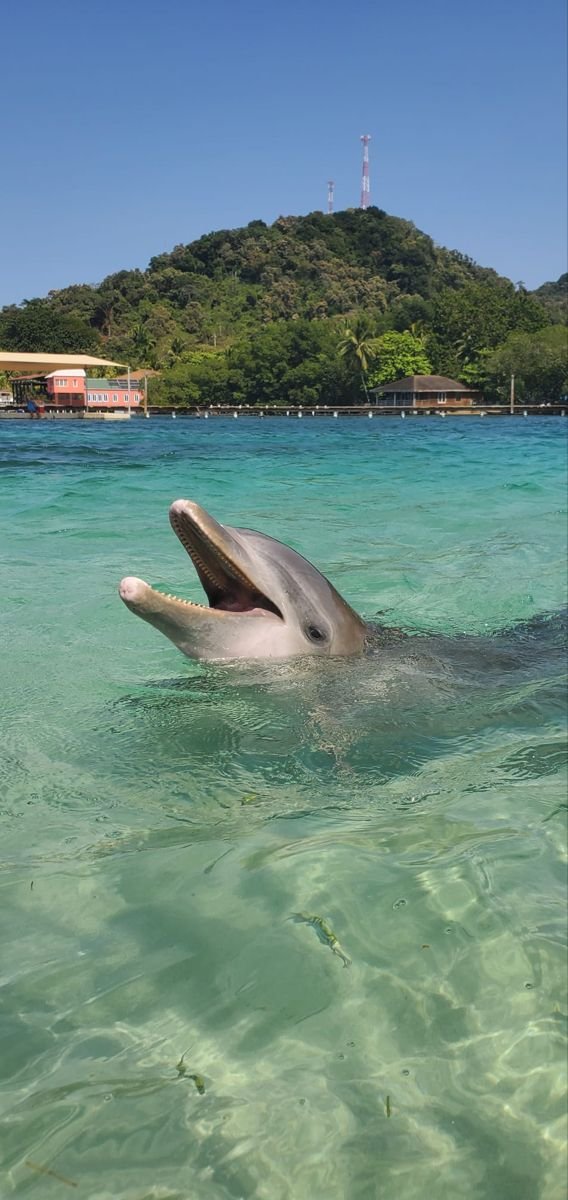
Must-See Attractions
- Roatán Island
Roatán is the crown jewel of Honduras’s Caribbean coast and the country’s most visited destination. Known for its crystal-clear waters, vibrant coral reefs, and laid-back island vibe, Roatán is a paradise for beach lovers and divers alike. The island offers stunning white-sand beaches like West Bay Beach, where snorkeling and swimming with tropical fish are everyday pleasures. Beyond the beach, Roatán features attractions such as the Roatán Institute for Marine Sciences, where you can encounter dolphins and learn about marine conservation. The island’s lively local culture, delicious seafood, and welcoming atmosphere make it a must-see. - Copán Ruins
For history enthusiasts, the ancient Maya city of Copán is a highlight of any Honduras itinerary. This UNESCO World Heritage Site is renowned for its intricate stone carvings, hieroglyphic stairway, and well-preserved temples and plazas. Walking through Copán’s archaeological park offers a fascinating glimpse into the Mayan civilization’s art, astronomy, and political life. The nearby Museum of Mayan Sculpture enhances the experience with detailed exhibits. Copán is also surrounded by charming colonial towns that add cultural depth to your visit. - La Tigra National Park
Just outside Tegucigalpa, La Tigra is Honduras’s oldest national park and a sanctuary of cloud forest biodiversity. Covering over 7,400 hectares, the park is home to more than 200 bird species, ocelots, monkeys, and rare plants like the sacred Mayan erythrina tree. Hiking through its misty trails, you’ll encounter waterfalls, dense vegetation, and panoramic views of the surrounding valleys. La Tigra offers a refreshing escape into nature and a chance to experience Honduras’s rich ecological heritage. - Lake Yojoa
The largest natural lake in Honduras, Lake Yojoa is a scenic hotspot for birdwatchers, anglers, and nature lovers. Surrounded by mountains and coffee plantations, the lake area boasts more than 400 bird species, including cranes and jacanas. Visitors can explore nearby waterfalls, hot springs, and caves, or simply relax by the water’s edge. Unique accommodations like Agualpa Domos & Cabanas provide an immersive experience with dome-shaped lodgings right on the lakefront. - Jeanette Kawas National Park
Located on the Caribbean coast, this national park offers a diverse landscape of beaches, coral reefs, lagoons, and tropical forests. It’s a haven for wildlife including dolphins, crocodiles, and numerous bird species. The park’s pristine beaches and mangroves are perfect for eco-tourism, kayaking, and wildlife photography. Jeanette Kawas National Park is ideal for travelers seeking a blend of adventure and tranquility away from the crowds. - Utila and Guanaja Islands
Beyond Roatán, the Bay Islands archipelago includes Utila and Guanaja, each with its own unique charm. Utila is famous for affordable diving courses and a youthful, backpacker-friendly vibe. Guanaja, more remote and less developed, offers untouched beaches and excellent snorkeling spots. Both islands provide a quieter alternative to Roatán, with opportunities to explore coral reefs, mangroves, and local Garifuna culture. - Pico Bonito National Park
This park is a paradise for hikers and nature enthusiasts. With dense rainforests, waterfalls, and diverse wildlife, Pico Bonito offers trails ranging from easy walks to challenging treks. The park’s rivers are popular for white-water rafting, and birdwatchers can spot toucans, parrots, and other exotic species. Located near La Ceiba, Pico Bonito is a gateway to adventure and ecological discovery. - Cayos Cochinos
A group of small islands and coral reefs off the northern coast, Cayos Cochinos is a protected marine reserve known for its biodiversity and crystal-clear waters. The islands are perfect for snorkeling, diving, and eco-tourism. Visitors can enjoy secluded beaches, observe sea turtles, and experience traditional Garifuna island life. Cayos Cochinos offers an off-the-beaten-path escape into nature. - Colonial Towns: Comayagua and Santa Rosa de Copán
For cultural immersion, visit Comayagua, known for its well-preserved colonial architecture and historic churches, and Santa Rosa de Copán, famous for coffee plantations and traditional Honduran culture. These towns provide insight into Honduras’s colonial past and vibrant present-day traditions.
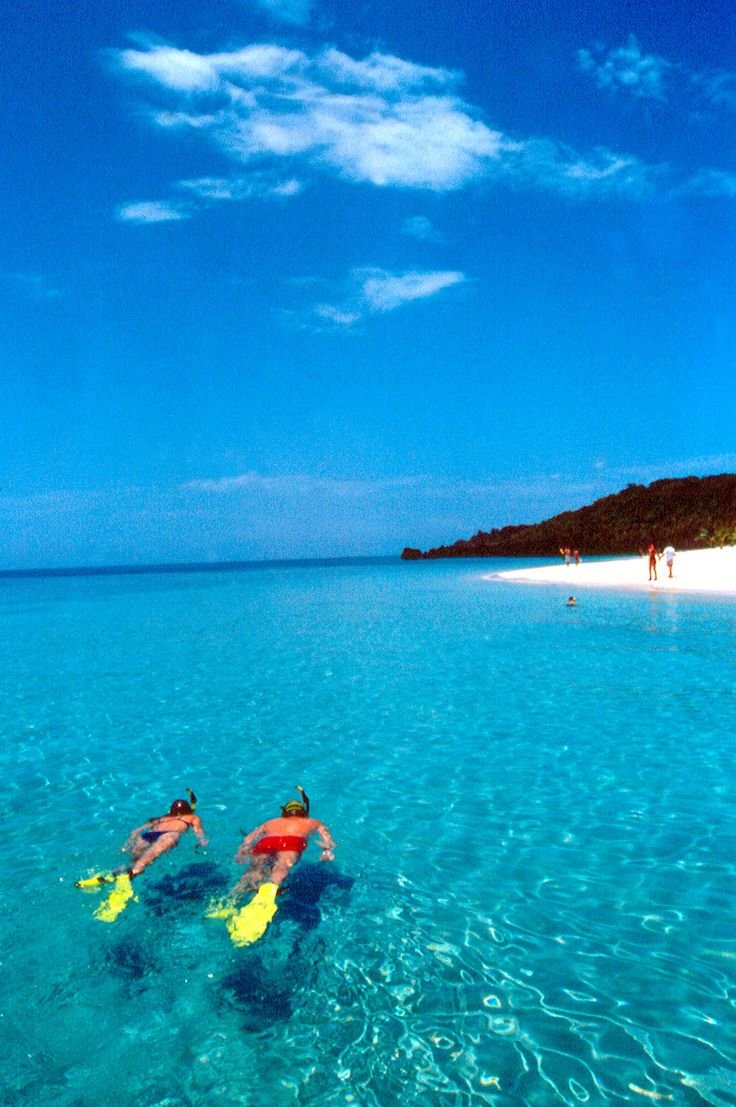
Must-Do Activities
- Scuba Diving and Snorkeling
Honduras’s Caribbean coast and Bay Islands are world-renowned for their underwater beauty. Roatán and Utila offer some of the Caribbean’s best diving sites, with healthy coral reefs, abundant marine life including sharks, rays, dolphins, and sea turtles. Whether you’re a beginner or an experienced diver, you can find dive shops offering courses and guided excursions. Snorkeling is equally rewarding at spots like West Bay Beach and Cayos Cochinos, where shallow reefs teem with colorful fish and corals. - Exploring Mayan Archaeological Sites
Visiting Copán’s ruins is a must for history buffs. Guided tours provide detailed insights into Mayan culture, architecture, and hieroglyphics. Beyond Copán, smaller archaeological parks like Quiriguá offer additional exploration opportunities. Walking among ancient temples and plazas connects you to a civilization that shaped Central America’s history. - Hiking and Wildlife Watching
Honduras’s national parks like La Tigra, Pico Bonito, and Cusuco offer excellent hiking trails through cloud forests and rainforests. Along these trails, you can spot exotic birds, monkeys, and other wildlife. Guided nature walks enhance your understanding of the local ecosystem and conservation efforts. For more adventurous travelers, trekking to waterfalls, rappelling, or zip-lining in these parks adds excitement to your journey. - Visiting Waterfalls and Hot Springs
Pulhapanzak Waterfall near Lake Yojoa is a spectacular natural attraction where you can swim in cool pools or try rappelling down the falls. Nearby hot springs provide a relaxing way to unwind after a day of exploration. These natural features highlight Honduras’s volcanic and mountainous geography. - Cultural Experiences with the Garifuna People
The Garifuna communities along the Caribbean coast offer a unique cultural experience. You can enjoy traditional music, dance, and cuisine while learning about their history and way of life. Participating in local festivals or visiting Garifuna villages adds a rich cultural dimension to your trip. - Kayaking and River Rafting
Rivers like the Cangrejal near La Ceiba provide thrilling white-water rafting experiences for adventure seekers. Kayaking through mangroves and lagoons in Jeanette Kawas National Park or the Cayos Cochinos islands offers a peaceful way to explore Honduras’s aquatic ecosystems and spot wildlife. - Birdwatching
With over 700 bird species recorded, Honduras is a birdwatcher’s paradise. Lake Yojoa, La Tigra, and Pico Bonito are prime locations to observe colorful toucans, parrots, hummingbirds, and rare species. Guided birdwatching tours help identify species and enhance your appreciation of the country’s biodiversity. - Relaxing on Beaches and Island Hopping
Simply soaking up the sun on pristine beaches like West Bay Beach or exploring smaller islands like Guanaja and Cayos Cochinos by boat is a perfect way to unwind. Island hopping tours allow you to discover hidden coves, snorkel in untouched reefs, and experience the Caribbean’s tranquil beauty. - Coffee Plantation Tours
In the western highlands near Santa Rosa de Copán, coffee plantations offer tours where you can learn about coffee cultivation, processing, and tasting. These tours provide insight into one of Honduras’s key exports and a chance to enjoy stunning mountain scenery.
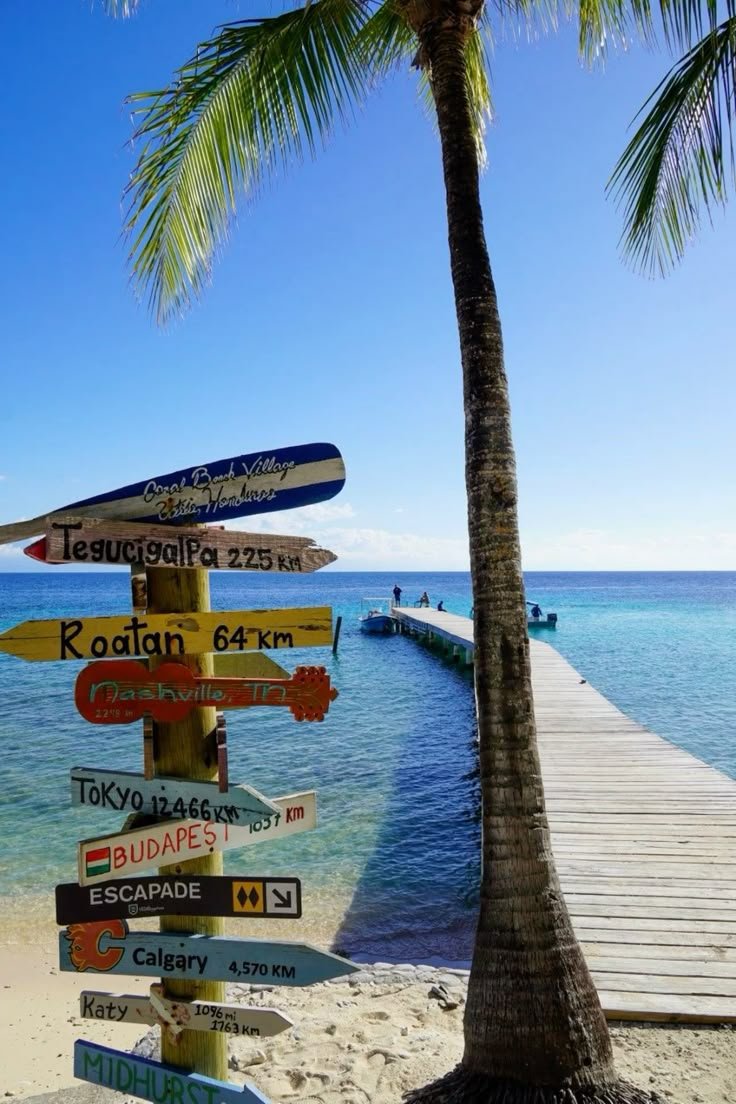
Travel Tips
Visiting Honduras in 2025 promises an enriching experience filled with natural beauty, ancient history, and vibrant culture. However, to ensure your trip is safe and enjoyable, it’s crucial to be well-prepared and informed about safety precautions, local customs, and basic language skills. This guide offers practical travel tips to help you navigate Honduras confidently and respectfully.
Safety Advice
Honduras has many incredible destinations, but it also poses certain safety challenges that travelers must consider carefully.
Crime and Personal Safety
Honduras experiences high rates of violent crime, including armed robbery, theft, and occasional assaults, particularly in urban areas such as Tegucigalpa and San Pedro Sula. Petty crime like pickpocketing and bag snatching is common in crowded places and on public transportation. The Bay Islands, including Roatán and Utila, are generally safer but still require vigilance, especially at night.
To stay safe:
- Avoid displaying valuables such as jewelry, expensive cameras, or large amounts of cash in public.
- Use a money belt or secure bag to keep your belongings close.
- Avoid walking alone at night, particularly in poorly lit or unfamiliar areas.
- Stay alert and aware of your surroundings at all times.
- Use only licensed taxis or trusted transportation services; avoid hailing random taxis or unmarked vehicles.
- Prefer traveling in groups or with a reputable guide, especially when exploring remote areas.
- Avoid discussing your travel plans openly in public to prevent drawing unwanted attention.
- Be cautious when approached by strangers offering unsolicited help or rides.
Transportation Safety
Road conditions in Honduras can be hazardous due to poor maintenance, inadequate signage, unpaved roads, and roaming livestock. Traffic accidents are common, and drivers often disregard traffic laws, driving aggressively or at excessive speeds.
Tips for safer travel on roads:
- Avoid driving at night due to poor lighting and increased risk of accidents and crime.
- Always keep car doors locked and windows closed.
- Do not pick up hitchhikers.
- Use reputable bus companies for long-distance travel and avoid overcrowded or poorly maintained vehicles.
- If renting a car, ensure the rental includes insurance and that the vehicle is in good condition.
- Carry a charged cell phone and a charger for emergencies.
- Be aware of possible impersonation by criminals posing as police officers; legitimate checkpoints have police vehicles, green cones, and several officers. If in doubt, call local authorities before cooperating.
Avoiding Scams and Demonstrations
Tourists can be targets of scams, such as being overcharged by taxi drivers or tricked into paying for services not rendered. Always negotiate prices in advance and verify information carefully.
Political demonstrations and protests can occur suddenly, sometimes turning violent. These are most common in major cities and can disrupt travel plans. Avoid large gatherings, stay informed through local news, and follow authorities’ instructions promptly.
Health Precautions
- Avoid drinking tap water, fountain drinks, or ice cubes. Stick to bottled or boiled water.
- Be cautious with street food if you have a sensitive stomach.
- Use insect repellent and consider antimalarial medication if visiting rural or jungle areas.
- Stay up to date on routine vaccinations and consider travel insurance covering medical emergencies.
- Protect yourself from the tropical sun with sunscreen, hats, and lightweight clothing.
Local Customs
Understanding and respecting Honduran customs will enrich your experience and help you connect with locals.
- Greetings: Hondurans are warm and polite. A common greeting is a handshake or a light hug among acquaintances. Use formal titles such as “Señor” or “Señora” followed by the last name in professional or formal settings.
- Dress Code: Dress modestly, especially when visiting religious sites or rural areas. Lightweight, breathable clothing is best for the tropical climate, but avoid overly revealing outfits.
- Respect for Religion: Honduras is predominantly Catholic, and religious festivals and traditions are important. Show respect when visiting churches or attending ceremonies.
- Tipping: Tipping is customary in restaurants (around 10-15%) and for services like taxi rides or hotel staff.
- Photography: Always ask permission before photographing people, especially in indigenous or Garifuna communities.
- Social Behavior: Public displays of affection are generally accepted in tourist areas but may be frowned upon in conservative rural communities.
Language Basics
Spanish is the official language of Honduras and is spoken by the vast majority of the population. English is widely understood in tourist hubs, particularly on the Bay Islands, but learning some basic Spanish phrases will greatly enhance your interactions and show respect for local culture.
Here are some useful Spanish phrases for travelers:
- Hola – Hello
- Buenos días / Buenas tardes / Buenas noches – Good morning / Good afternoon / Good evening
- Por favor – Please
- Gracias – Thank you
- ¿Cuánto cuesta? – How much does it cost?
- ¿Dónde está el baño? – Where is the bathroom?
- No hablo mucho español – I don’t speak much Spanish
- ¿Puede ayudarme? – Can you help me?
- Estoy perdido/a – I’m lost
- ¿Habla inglés? – Do you speak English?
- Emergencia – Emergency
Learning these basics will help you navigate markets, order food, ask for directions, and engage more meaningfully with locals.
Final Tips for a Smooth Journey
Honduras offers a wealth of unforgettable experiences, but travelers must exercise caution and respect local customs to ensure a safe and rewarding visit. Stay informed about current safety conditions, use common sense in your daily activities, and embrace the warmth and culture of Honduras with an open heart and mind. With these travel tips in hand, your 2025 journey to Honduras will be both safe and enriching.

